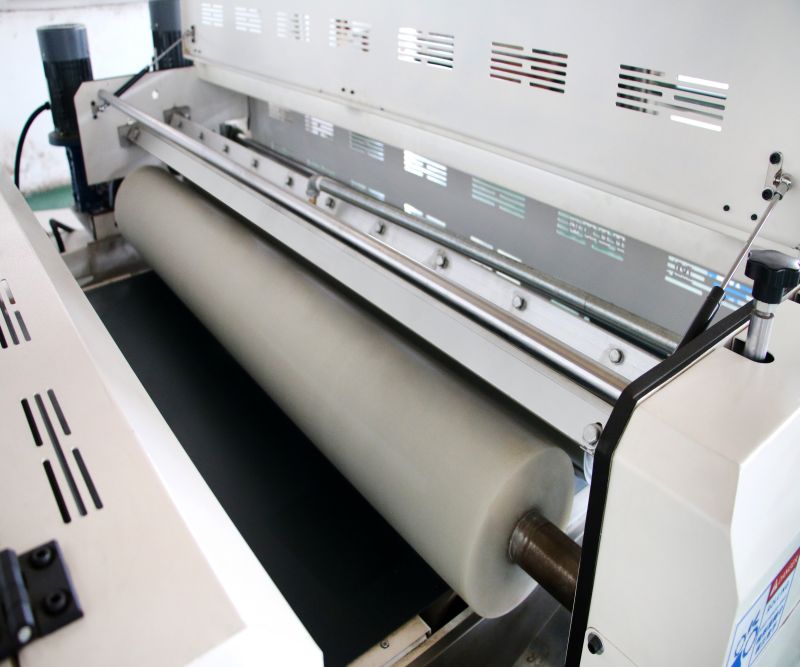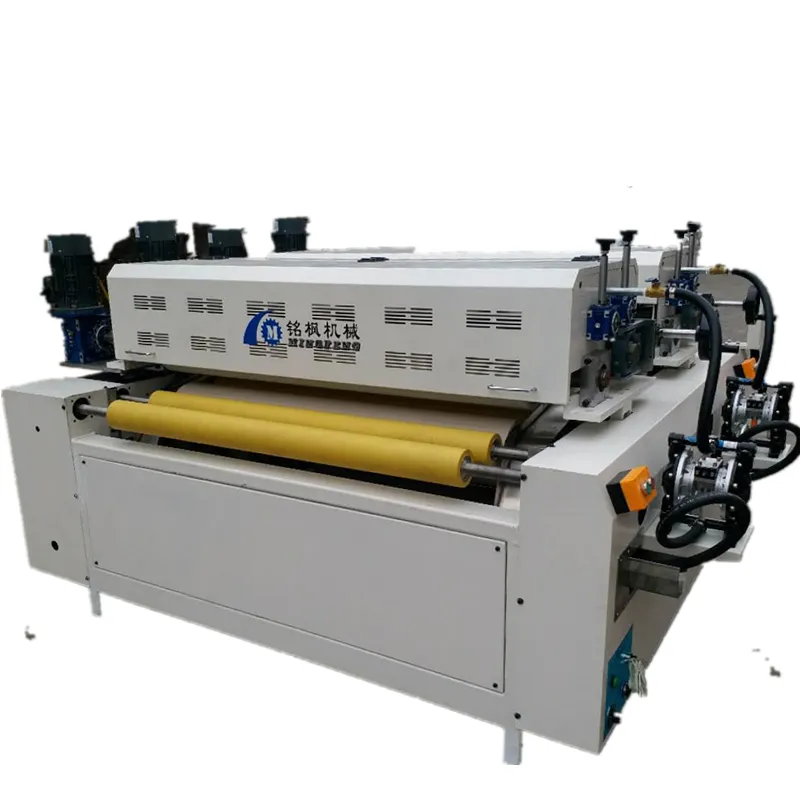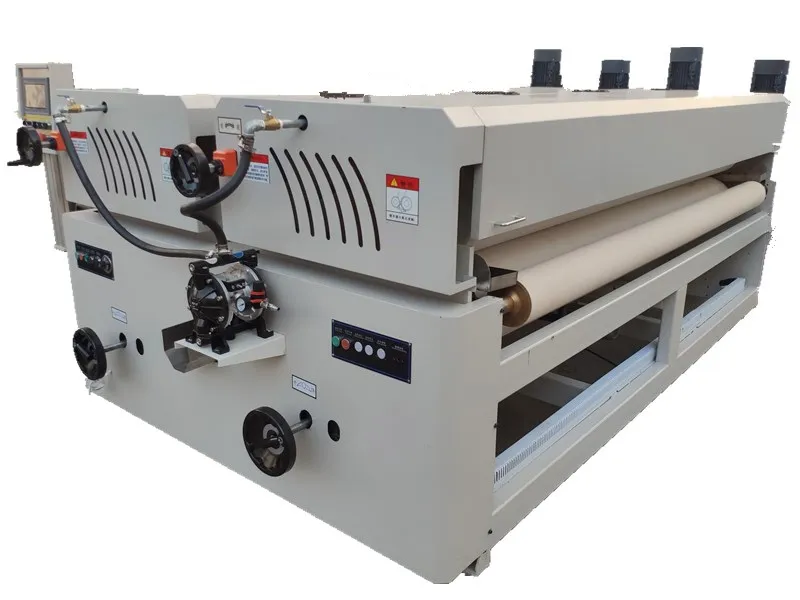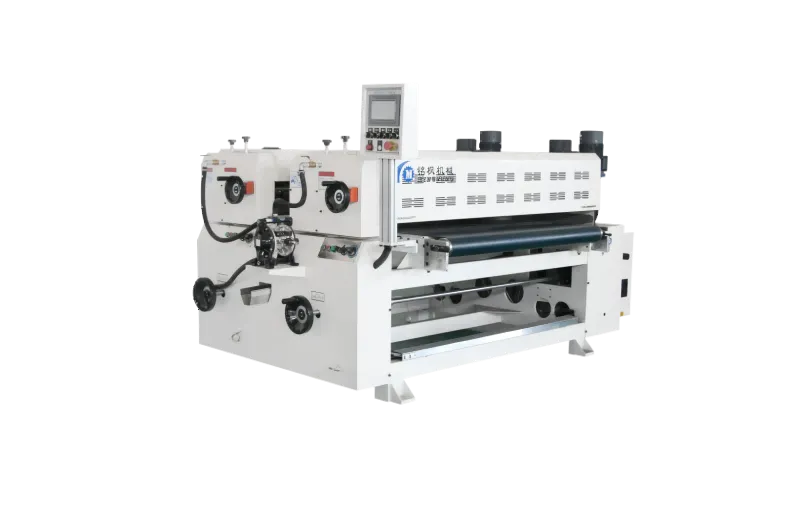In modern coating processes, UV roller coating machines have become crucial equipment in industries such as printing, packaging, electronics, furniture, and plastics. They achieve rapid, uniform, and high-gloss surface coatings through UV curing.
However, temperature control is a critical factor affecting coating quality, curing effect, and equipment stability during operation. Many operators frequently ask, "What is the ideal operating temperature for a UV roller coating machine?"
This article will systematically explain the ideal operating temperature range for UV roller coating machines from multiple perspectives, including principles, material properties, the impact of temperature control, and parameter adjustment, and will detail the decisive role of temperature control in production quality.

Why is temperature critical for UV roller coating machines?
Temperature is one of the core variables affecting the stability of the UV coating process and the quality of the finished product. UV roller coating machines use rollers to evenly transfer UV coating onto the surface of the object being coated, which is then instantly cured by UV light. This process involves multiple stages, including mechanical transmission, fluid flow, and chemical reactions, all of which are highly sensitive to temperature.
1. Coating Flowability Depends on Temperature
The viscosity of UV coatings changes with temperature. At low temperatures, the coating thickens, resulting in poor leveling and uneven surface. At high temperatures, the viscosity is too low, leading to sagging, penetration, or uneven coating thickness.
2. UV Curing Efficiency Affected by Temperature
UV curing depends on the reaction rate of the photoinitiator, which is directly related to temperature. If the coating temperature is too low, the reaction may be incomplete; if it is too high, the photoinitiator may decompose or evaporate, resulting in insufficient curing or decreased adhesion.
3. Mechanical Precision and Roller Stability
Rollers, doctor blades, supports, and other mechanical components generate heat through friction during operation. If the temperature control system is unstable, thermal expansion and contraction can cause changes in gaps, affecting coating thickness and uniformity.

What is the operating temperature of a UV roller coating machine?
In most industrial production, the ideal operating temperature for a UV roller coating machine is typically controlled between 22℃ and 28℃. This temperature range ensures both good fluidity of the coating and thermal stability of all equipment components.
However, this temperature is not absolute and needs to be fine-tuned based on different material types, UV coating types, and production environments.
1. Ambient Temperature
The workshop ambient temperature should be stable between 20℃ and 26℃. Too low an ambient temperature will cause the UV coating viscosity to increase, making it difficult to coat evenly; too high a temperature will accelerate coating evaporation or cause premature UV curing.
2. Coating Temperature
In practical use, a coating temperature slightly higher than the ambient temperature by 1-3℃ is ideal, typically controlled between 23℃ and 30℃. This ensures the coating viscosity is within the optimal flow range, improving transfer efficiency and surface gloss.
3. Roller Surface Temperature
The roller surface temperature should be maintained at 25℃ ± 2℃. Large fluctuations in roller surface temperature will cause changes in coating thickness, affecting gloss and curing uniformity. High-end UV roller coating machines are usually equipped with a roller constant temperature circulation system, using water cooling or hot oil control to maintain a stable roller temperature.
4. UV Lamp Zone Temperature
The temperature in the UV lamp irradiation zone is generally controlled between 45℃ and 60℃. Excessive temperature will cause the coating surface to cure too quickly while the internal reaction is incomplete; excessively low temperature will result in incomplete curing and poor adhesion.

What are the effects of excessively low temperature on a UV roller coating machine?
When the temperature is low, the operating performance and product quality of the UV roller coating machine will be significantly affected:
1. Uneven Coating and Poor Leveling
The increased viscosity of the coating makes it difficult to flow, making it difficult for the roller to form a stable transfer film, easily leading to ripples, bubbles, or pinholes.
2. Slower Curing Speed
The photoinitiator reaction rate decreases, and after UV lamp curing, there may still be a phenomenon where the surface is dry but the underlying layer is not cured, affecting the hardness and wear resistance of the finished product.
3. Increased Equipment Load
At low temperatures, the coating flow resistance is high, increasing the load on the coating machine's motor, pump, and roller drive system, easily leading to increased energy consumption and mechanical wear.
4. Decreased Adhesion
If the coating fails to fully penetrate the substrate surface, the cured layer will have insufficient adhesion and is prone to peeling off during subsequent processing or handling.
What problems will excessively high temperatures cause to a UV roller coating machine?
Excessively high temperatures are also detrimental to the stable operation of the UV coating process:
1. Coating Sagging or Uneven Thickness
When the coating viscosity is too low, uneven roller feeding can lead to areas with excessively thick or thin coatings, affecting the visual effect.
2. Uneven Curing or Orange Peel Texture
High temperatures may cause the surface to cure too quickly, while the internal reaction remains incomplete, resulting in "orange peel" texture or pinholes.
3. Photoinitiator Decomposition
UV photoinitiators are prone to decomposition at high temperatures, reducing reaction efficiency and causing the cured layer to become brittle.
4. Accelerated Equipment Aging
Prolonged high-temperature operation will accelerate the aging of components such as rollers, seals, and rubber rollers, shortening the service life of the UV roller coating machine.
How to scientifically control the temperature of a UV roller coating machine?
To maintain ideal operating temperatures, three aspects should be considered: equipment structural design, environmental regulation, and operational management.
1. Built-in Temperature Control System
Most modern UV roller coating machines are equipped with circulating water cooling systems or hot oil constant temperature systems. Temperature sensors monitor the roller and coating temperatures in real time, automatically adjusting cooling or heating intensity.
2. Ambient Temperature and Humidity Control
Air conditioning and dehumidification systems should be installed to maintain the workshop temperature within a constant range and humidity between 45% and 60% RH. Excessive humidity can easily cause surface defects or bubbles.
3. Coating Storage and Preheating
Coatings should be stored in a constant temperature zone and placed in the operating environment for 1-2 hours before use to allow for temperature equalization. Some processes can utilize online heating tanks or constant temperature pump systems to maintain stable coating viscosity.
4. UV Lamp Cooling System
UV lamps generate a lot of heat and must be used with air-cooling or water-cooling devices to prevent localized overheating. The internal temperature of the lamp housing should be maintained within a safe range to prevent shortening lamp life.

Do different types of UV coatings have different temperature requirements?
Indeed, the ideal temperature varies slightly depending on the chemical system of the UV coating.
Coating Types | Ideal coating temperature (°C) | Description |
| Acrylic Type | 23~28 | Medium viscosity, highly adaptable, commonly used in wood and plastics |
| Epoxy Acrylic Type | 25~30 | Sensitive to temperature; prone to clumping at low temperatures |
| Polyurethane Acrylic Type | 24~27 | Requires stable temperature to avoid foaming |
| Polyester Acrylic Type | 22~25 | Good flowability, suitable for medium-temperature processes |
Therefore, when operating a UV roller coating machine, the appropriate temperature should be set by consulting the Technical Data Sheet (TDS) based on the type of coating being used.
Does the temperature of a UV roller coating machine affect gloss and adhesion?
The answer is yes. Temperature is one of the key parameters determining the appearance and physical properties of a UV coating.
1. Effect on Gloss
When the temperature is stable, the surface tension of the coating is evenly distributed, resulting in high gloss and a smooth finish after curing; large temperature fluctuations can lead to a matte finish or uneven gloss.
2. Effect on Adhesion
When the coating temperature is appropriate, the coating can fully wet the substrate surface to form a strong bond; deviations from the ideal temperature range will result in decreased peel strength.
How to determine if the temperature control of a UV roller coating machine is adequate?
To determine if temperature control is appropriate, consider the following aspects:
• Coating appearance: Smooth surface, free of flow marks and pinholes;
• Curing degree: Verify complete curing using a hardness tester or scratch test;
• Roller surface inspection: Measure temperature difference using an infrared thermometer or contact probe; the error should not exceed ±2℃;
• Energy consumption records: When temperature control is stable, equipment power fluctuations should be less than 10%.
If large temperature fluctuations or an increase in product defect rates are observed, the temperature control system and environmental conditions should be checked immediately.
What are some common misconceptions about temperature control?
Misconception 1: Higher temperatures are more conducive to curing.
In reality, excessively high temperatures can damage the coating's molecular structure, leading to uneven curing.
Misconception 2: Ignoring the influence of ambient temperature.
Many operators only monitor the roller temperature, ignoring the overall deviation caused by changes in workshop temperature.
Misconception 3: Frequent adjustment of temperature control parameters.
The temperature control system should operate stably; frequent adjustments can easily cause temperature fluctuations, which are detrimental to quality stability.
How does XMF Machinery guarantee long-term reliability of machines?
XMF Machinery uses strict quality control processes, durable materials, and advanced manufacturing technology to ensure long-term reliability of our machines. Buyers who purchase from our company enjoy high quality machines with stable performance at affordable prices.
Our factory provides wholesale supply, regular promotions, and after-sales support to guarantee customer satisfaction. Customers can buy with confidence, knowing our brand has a reputation as a trusted manufacturer and supplier since 2006.
